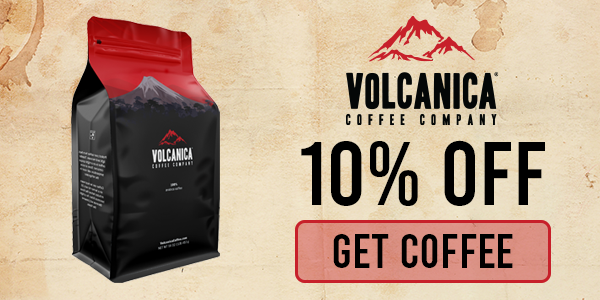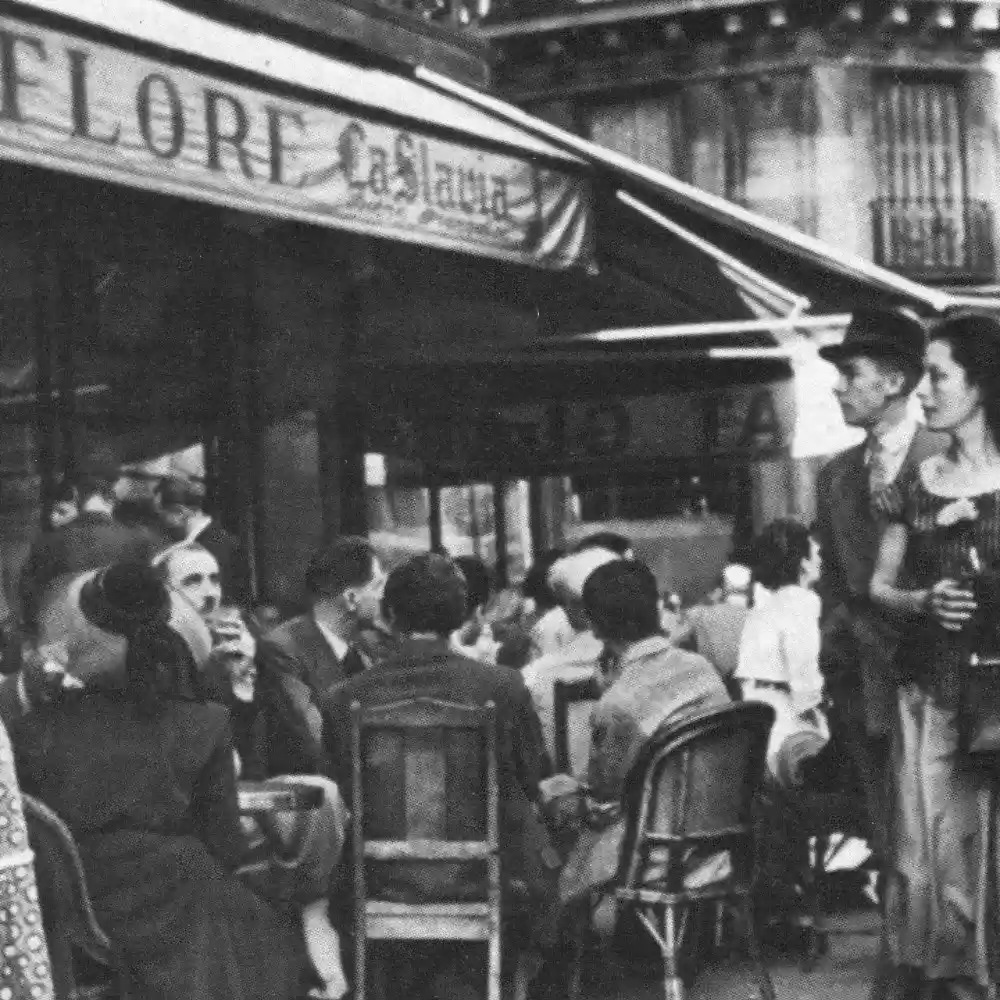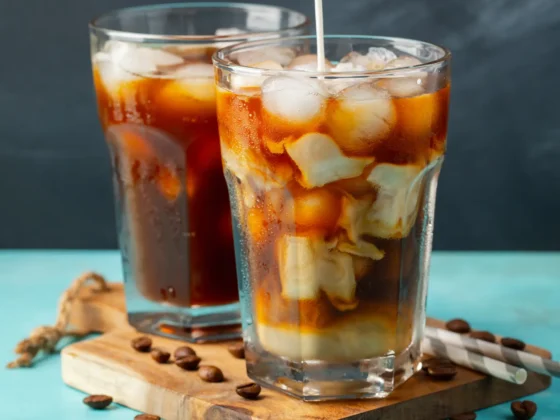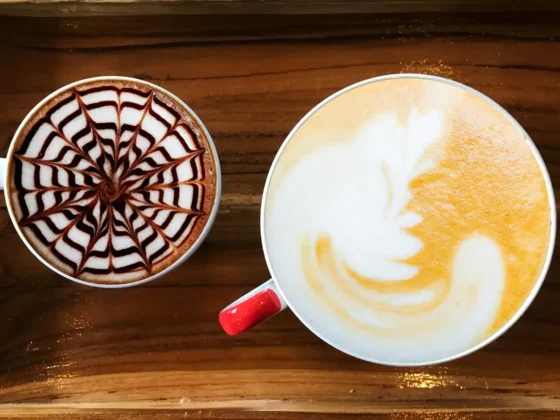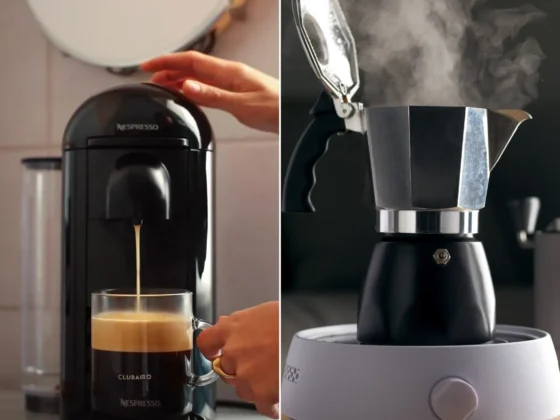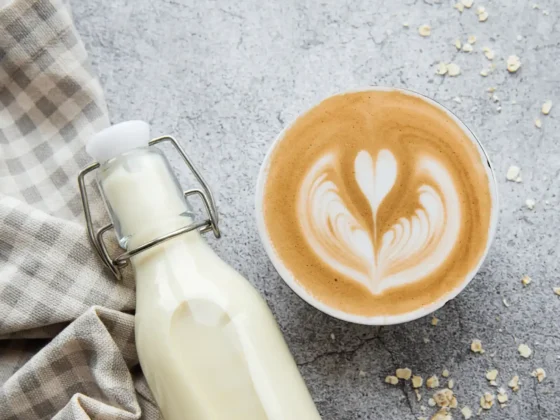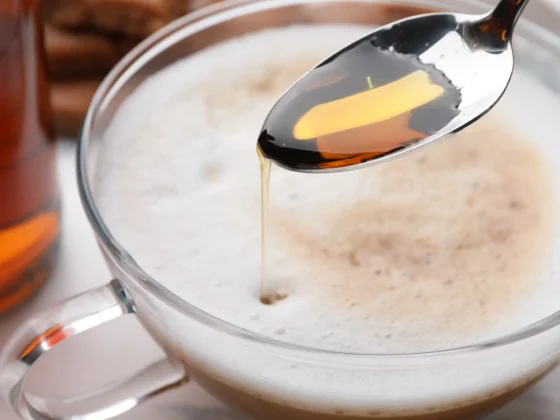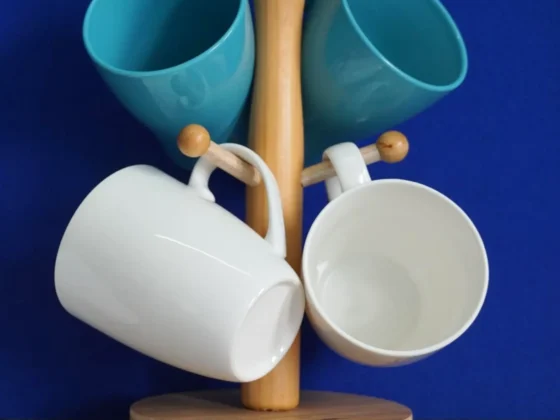In the captivating world of coffee, each brew tells its own story, imbued with rich history, careful craftsmanship, and intriguing flavor profiles. It’s a fascinating realm that effortlessly brings together cultures, traditions, and aficionados from across the globe. As we dive into this realm today, our focus narrows to a compelling duel, a delicate balance of coffee and milk – the captivating comparison of Breve vs. Latte.
These two popular beverages, with their distinct compositions and taste profiles, have found a cozy place in the hearts of many coffee lovers. They embody the diversity and complexity that characterizes the coffee spectrum, each representing a unique way of enjoying this beloved drink. But what truly differentiates a Breve from a Latte? Is it the blend of ingredients, the art of preparation, the taste, or perhaps, something more?
Join us as we embark on a flavorful journey, a deep dive into the artistry, the science, and the subtleties that distinguish these two espresso-based beverages. From the café corners of Italy to the coffee houses of America, let’s discover how a Breve stands up against a Latte, exploring their histories, their global influence, and ultimately, their mark on our coffee culture.
Breve vs. Latte: Key Takeaway
- Ingredients & Preparation: While both Breve and Latte are espresso-based drinks, their ingredients and preparation methods differ significantly. Lattes use a higher ratio of milk to espresso, resulting in a milder, creamier drink. Breves, on the other hand, use half-and-half (a mix of milk and cream) instead of milk, resulting in a richer, denser beverage.
- Taste Profiles: Lattes have a smooth, creamy taste, where the intensity of the espresso is balanced by the milk, making it an ideal choice for those who prefer a milder coffee flavor. Breves are creamier and richer, offering a more indulgent coffee experience with a fuller taste.
- Nutritional Comparison: Lattes generally have a lower calorie and fat content due to their predominantly milk-based composition, making them a healthier choice for daily consumption. Breves, due to their use of half-and-half, have a higher calorie and fat content, making them more of a treat or occasional indulgence.
- Global Coffee Trends: Lattes enjoy worldwide popularity, given their adaptable nature and the familiar comfort they offer. Breves, while less commonly found, are appreciated by a dedicated audience for their unique, rich coffee experience.
- Cultural Impact & Future Trends: Both beverages have made their mark on global coffee culture, with Lattes influencing many societies due to their origin and universal appeal, and Breves representing the spirit of innovation in coffee culture. Looking forward, the coffee industry is expected to see more personalization and sustainable practices, affecting both beverages’ production and consumption.
The Essential Understanding of Coffee
To truly appreciate the unique characteristics and appeal of the Breve and Latte, it’s essential to delve into the broader context of coffee. This incredible journey traverses through the annals of history, the diversity of global cultures, and the myriad types of coffee that have evolved over the centuries.
The History of Coffee
Originating from the ancient Ethiopian highlands, coffee is a precious offering to the world, accompanied by a fascinating history as intricate and diverse as its captivating taste. According to popular belief, the discovery of coffee’s invigorating properties can be attributed to a goat herder named Kaldi during the 9th century. Legend has it that Kaldi observed his goats displaying extraordinary energy levels after consuming the vibrant red berries from a particular plant. (1)
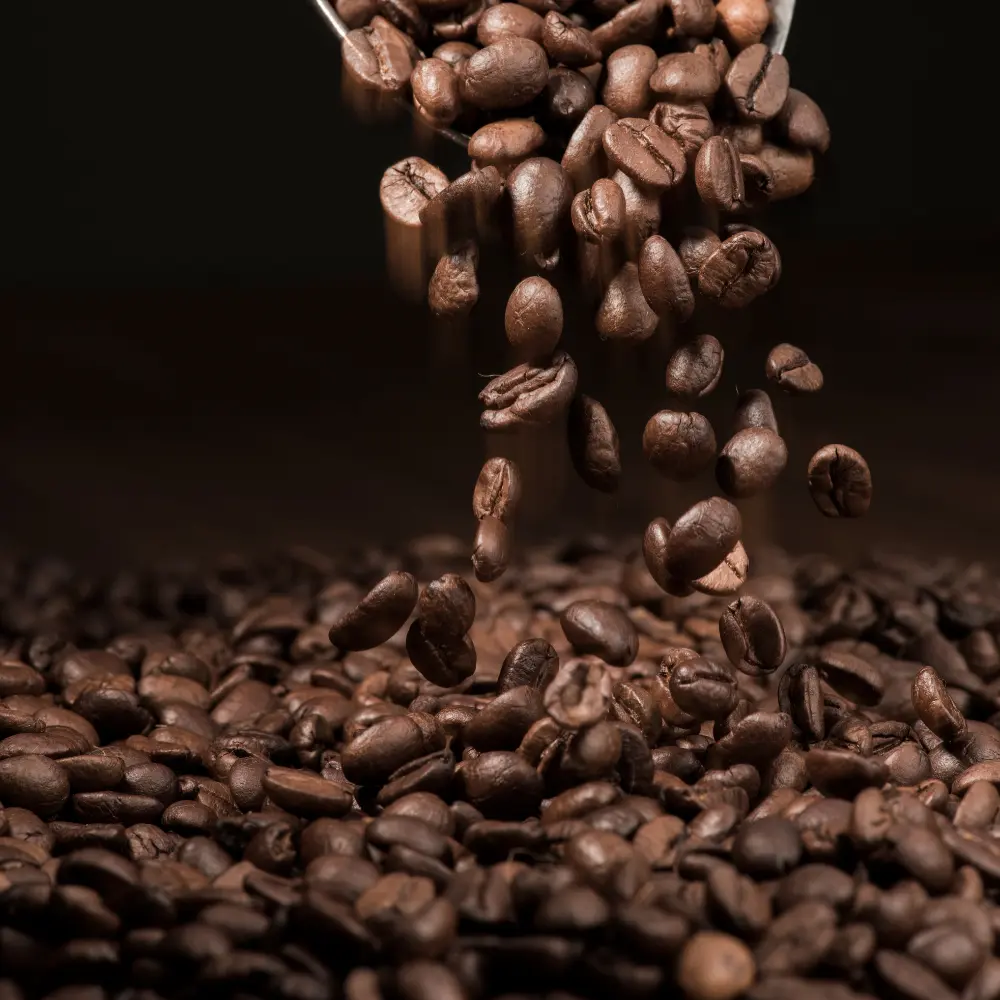
The knowledge of these magic beans spread rapidly from the Ethiopian plateau to the Arabian Peninsula, eventually reaching the rest of the world. In the 15th century, coffee was being grown in the Yemeni district of Arabia, and by the 16th century, it had found its way to Persia, Egypt, Syria, and Turkey.
Europe got its first taste of coffee in the 17th century, and it rapidly gained popularity. Coffee houses sprung up across the continent, acting as hubs of social activity and intellectual discourse. By the 18th century, coffee had made its way to the Americas, forever altering the agricultural and economic landscape of the New World.
Coffee Cultures Around the World
As coffee spread across the globe, it was embraced and adapted by various cultures, leading to the development of distinct coffee practices and traditions. The Ethiopian coffee ceremony, for instance, is a time-honored tradition where coffee preparation is an intricate process involving roasting, grinding, brewing, and serving, all done in a ceremonial and social setting.

In Italy, coffee is more than just a beverage – it’s a lifestyle. Espresso bars abound, serving not just as places to get a caffeine fix, but as social meeting points. In contrast, in places like Sweden and Finland, coffee consumption is a leisurely activity, often paired with sweet treats, in a tradition known as “fika.”
Types of Coffee: The Espresso Spectrum
The world of coffee is incredibly diverse, owing to different types of beans, roasting methods, grinding techniques, and brewing styles. The heart of many coffee varieties lies in espresso – a concentrated form of coffee served in ‘shots’. Espresso forms the base for a wide spectrum of coffee drinks, where it’s typically combined with varying amounts and types of milk.
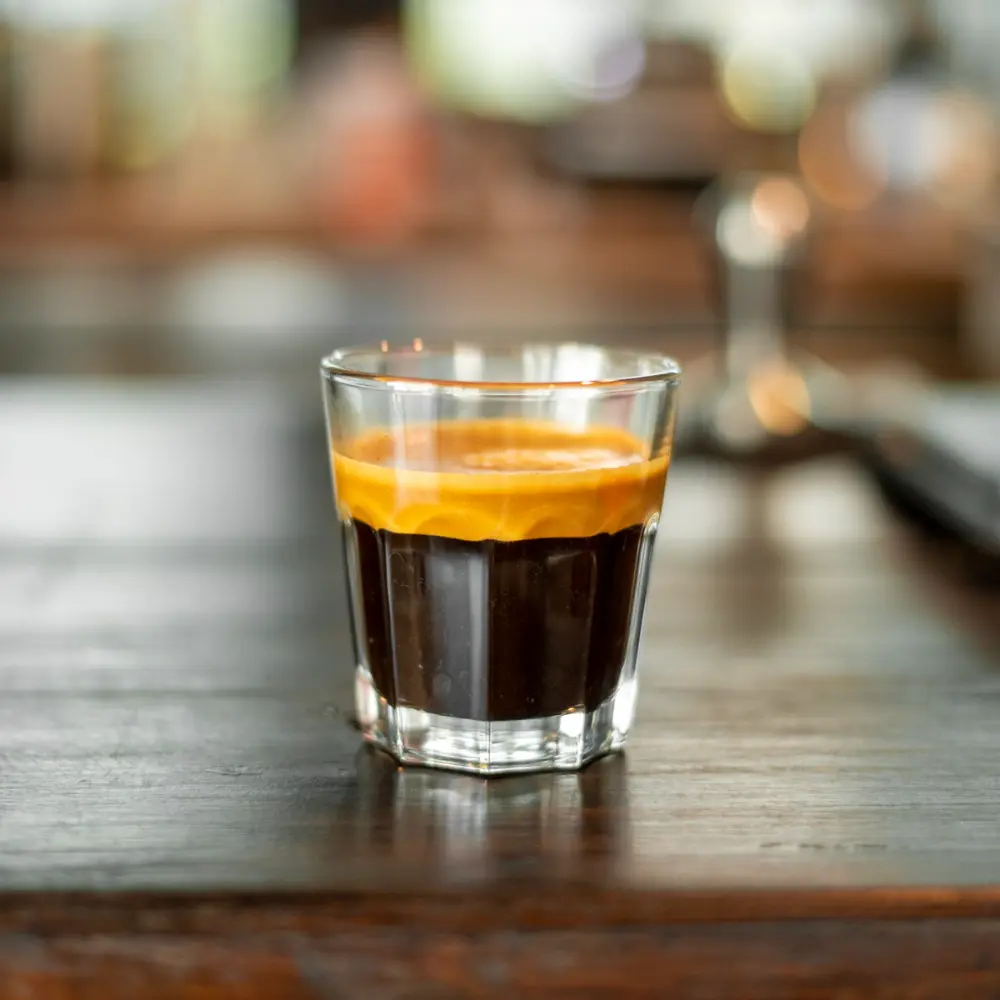
At one end of the spectrum, we have drinks like the Ristretto, a short shot of espresso with a bold, intense flavor. On the other end, you’ll find beverages like the Café Americano, a diluted version of espresso that resembles traditional drip coffee in taste and strength. Between these two extremes lies a vast array of coffee drinks such as the Cappuccino, Macchiato, Mocha, Flat White, and of course, our stars today, the Breve and Latte. Each variant offers a unique balance of espresso and milk, creating a symphony of flavors that cater to diverse coffee preferences globally.
Breve: A Rich and Creamy Delight
In the ongoing exploration of the exquisite symphony of espresso and milk, we now shine the spotlight on a rich and creamy delight – the Breve. Offering a unique spin on the conventional balance of coffee and milk, the Breve forms a luscious blend that dances between indulgence and sophistication.
What is a Breve?
As we navigate the battleground of Breve vs. Latte, let’s first understand what a Breve is. Essentially, a Breve, or Caffe Breve as it’s traditionally known, is an American variant of a latte. It swaps the regular milk found in a latte for half-and-half, which is a mixture of milk and cream. This alteration makes the Breve a richer, creamier drink that stands out from other espresso-based beverages.
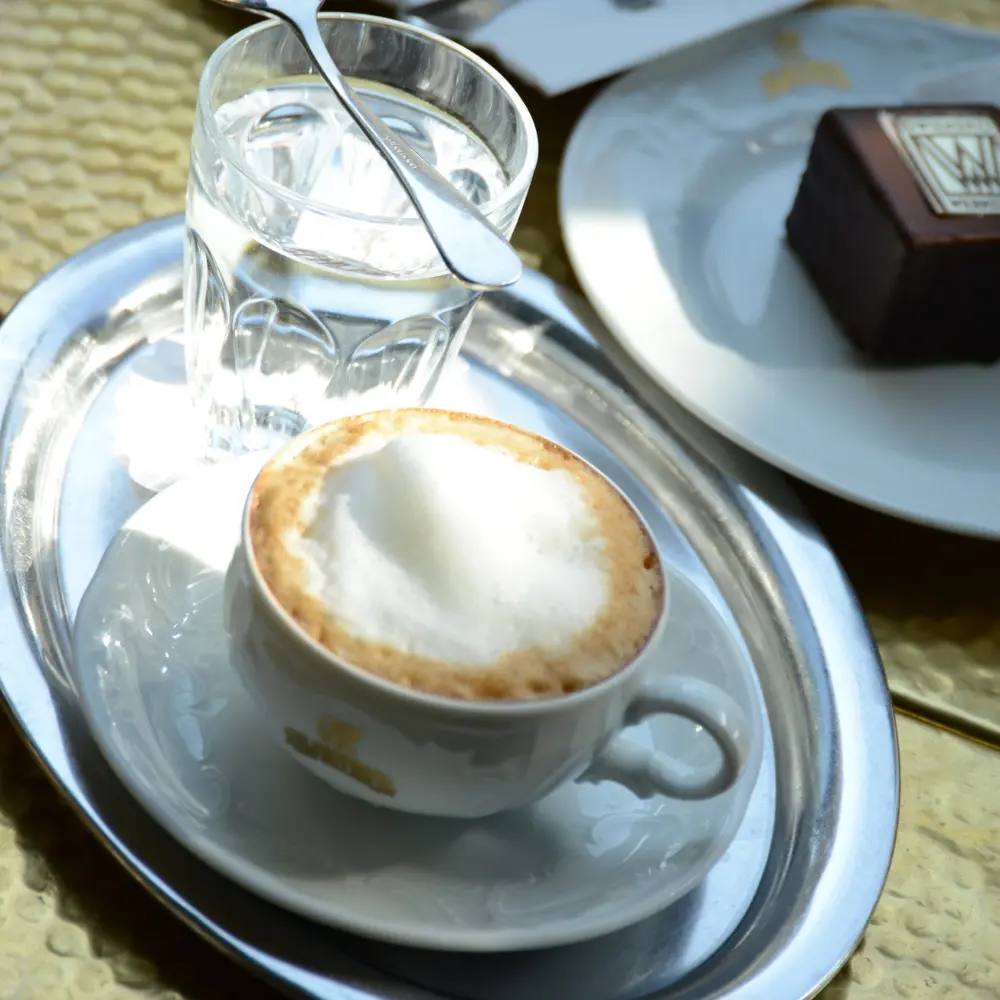
The typical composition of a Breve includes one part espresso to two parts steamed half-and-half, topped with a dollop of frothed half-and-half. This concoction results in a beverage that’s higher in fat and creamier than most of its counterparts, making the Breve a luxurious treat for those who appreciate a decadently smooth coffee experience.
The Art of Making a Breve

Creating a Breve requires precision, finesse, and an understanding of the delicate balance of its components. It begins with a shot of expertly brewed espresso, extracted to highlight its intense flavors and robust nature. Following this, half-and-half is steamed until it achieves a velvety texture, after which it is gently poured over the espresso. The key here is to maintain the right temperature to avoid scalding the half-and-half and to achieve the desired consistency. The drink is then topped with a small amount of frothed half-and-half, adding a light, airy touch to the dense, rich beverage.
Tasting Notes and Pairings for a Breve
Sipping a Breve is akin to indulging in a sumptuous dessert. Its flavor profile is rich and creamy, with the boldness of the espresso beautifully balanced by the smoothness of the half-and-half. The sweetness is subtle, allowing the natural flavors of the coffee to shine through. A Breve often leaves a lingering creamy aftertaste, which is loved by those who prefer a rich coffee experience.

When it comes to pairings, a Breve beautifully complements a range of pastries and desserts, particularly those with a light, subtle sweetness. Think along the lines of almond croissants, butter cookies, or a slice of vanilla pound cake. These treats provide a nice contrast to the rich, creamy nature of the Breve, making for a well-rounded coffee experience.
Latte: The Milky Marvel
The world of espresso-based drinks is a cornucopia of taste experiences, among which the Latte enjoys remarkable popularity. Renowned for its creamy subtlety and balanced taste, the Latte is a testament to the harmony that can be achieved between coffee and milk.
What is a Latte?
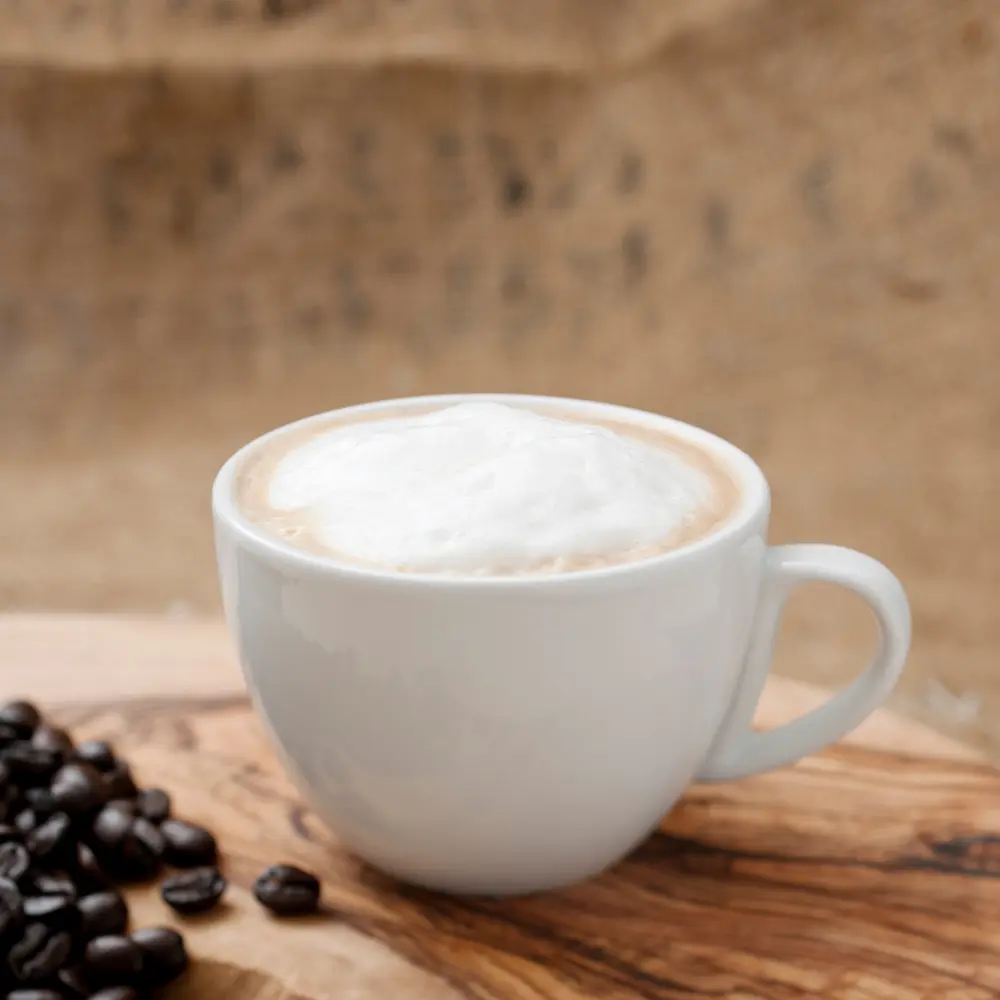
The term “Latte” originated in Italy, where “caffè latte” means “milk coffee”. It is a coffee concoction typically made up of a single shot of espresso and generous amounts of steamed milk, topped with a light layer of frothed milk. The defining characteristic of a Latte is the larger milk-to-coffee ratio, which makes the drink milder and creamier compared to others in the espresso family. Its soothing nature and adaptable flavor profile make it an excellent base for flavored syrups, resulting in popular variations like the vanilla latte, caramel latte, and pumpkin spice latte. (2)
The Process Behind a Perfect Latte
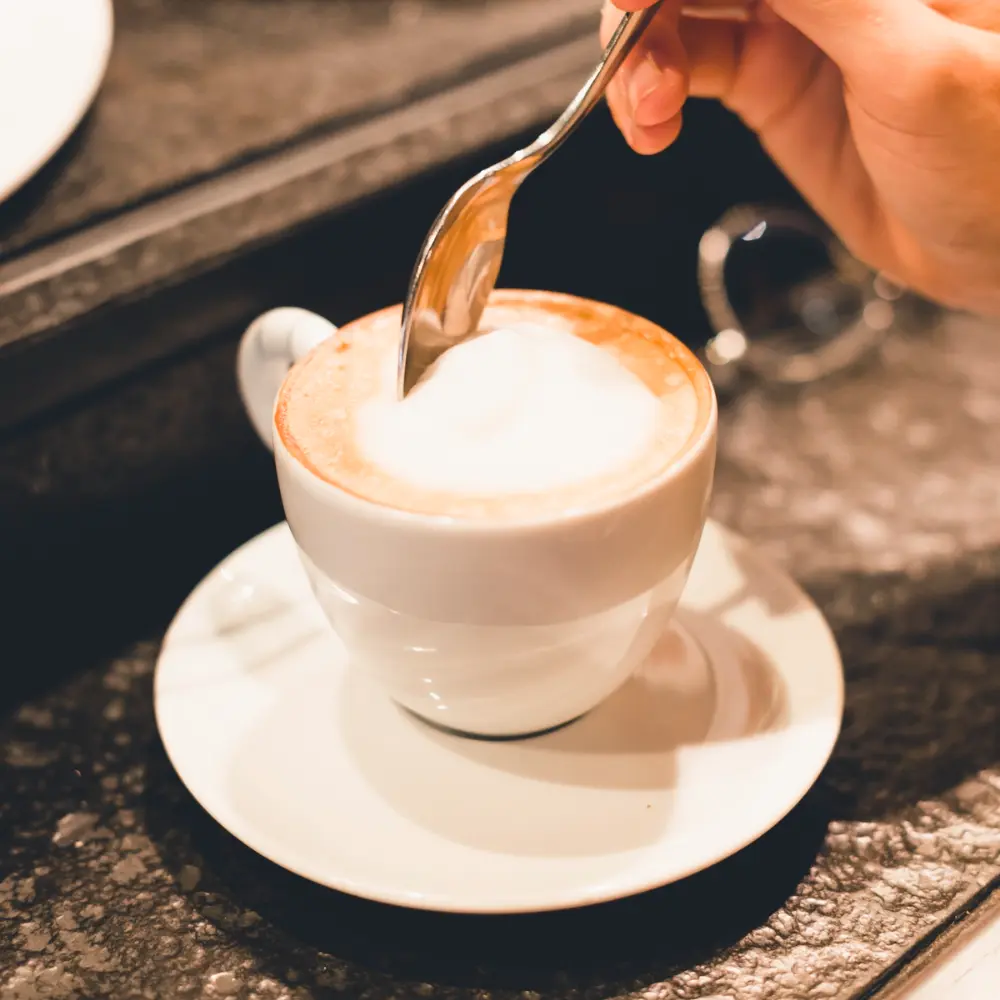
Crafting a perfect Latte involves a careful balance of its core components. It starts with a well-pulled shot of espresso. This shot forms the base and imparts the vital coffee flavor to the drink. After the espresso, the next step is adding the steamed milk. The milk should be steamed to the point where it achieves a velvety microfoam consistency, which provides the creamy texture that Lattes are famous for. This milk is then poured over the espresso, resulting in a mesmerizing interplay of color and texture. The final touch to a classic Latte is a thin layer of milk froth on top, often crafted into intricate designs, known as latte art, by skilled baristas.
Flavor Profile and Food Combinations with Lattes
A traditional Latte has a smooth, creamy flavor where the taste of espresso is noticeable but not overpowering. The steamed milk tempers the strong espresso, resulting in a comforting, easy-to-drink beverage. The addition of flavored syrups can further enhance and alter the taste, introducing sweet, spiced, or fruity undertones as per individual preferences.
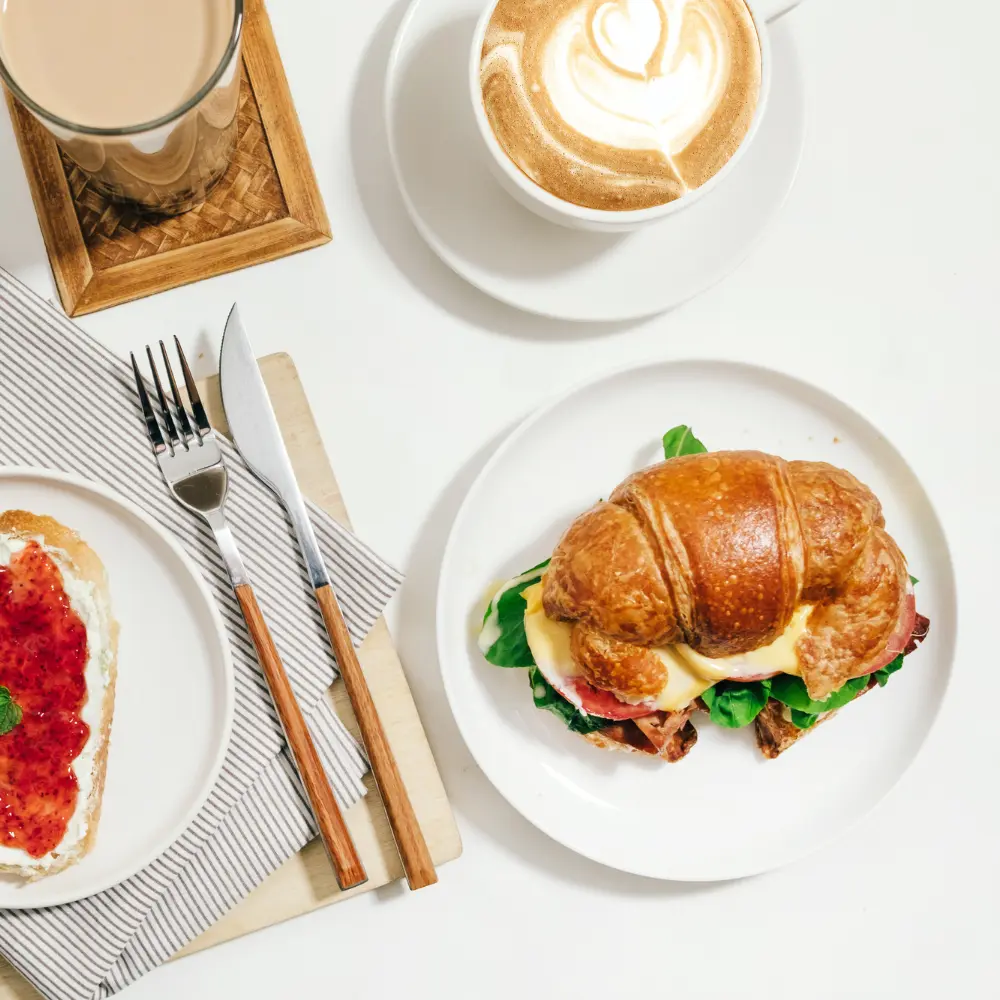
When it comes to food pairings, Lattes are incredibly versatile. The soft, creamy flavor profile complements a variety of foods. For a classic combination, try it with a buttery croissant or a blueberry muffin. If you prefer a savory route, a Latte pairs well with toasted bagels, breakfast sandwiches, or even quiche. For those with a sweet tooth, the possibilities are endless – from cookies and biscotti to scones and macarons, a Latte can elevate your snack time into a gourmet coffee break.
Breve vs Latte: The Showdown
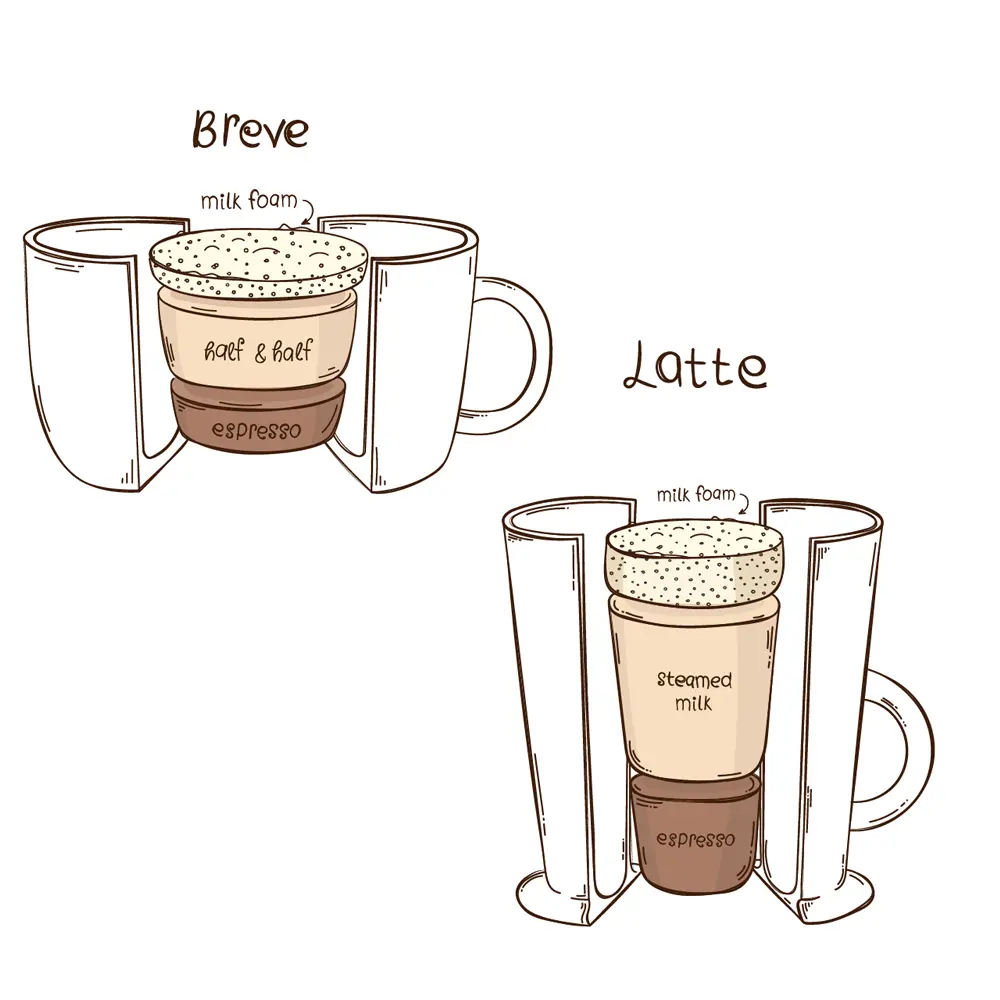
The dynamic world of coffee brings a multitude of delightful experiences, each with its unique character and charm. Today, our focus rests on two of these fascinating experiences: Breve and Latte. Let’s delve into a head-to-head comparison of these espresso-based beverages, examining their ingredients, taste profiles, and nutritional aspects.
Comparing Ingredients: Breve vs Latte
In the Breve vs Latte showdown, the defining battle is waged in the arena of ingredients. Both drinks share a common foundation – a shot of robust espresso. Beyond this, their paths diverge.
The Latte takes the traditional route, combining espresso with steamed milk and a small amount of milk foam on top. The milk-to-espresso ratio in a Latte is higher, often making it a larger drink. This composition gives the Latte its characteristic mild and creamy flavor profile.
On the other hand, the Breve makes a bolder statement. Instead of using just milk, the Breve uses half-and-half, which is a blend of milk and cream. This mix is steamed and then added to the espresso, with a dollop of frothed half-and-half on top. This deviation results in a rich, indulgent coffee experience that is distinctly Breve.
Taste Differences: Breve vs Latte
When it comes to taste, the Breve and the Latte offer contrasting experiences.
A Latte, owing to its higher milk content, is smooth and creamy. The taste of the espresso is present but is tempered by the milk, making the Latte a relatively milder drink. It’s an ideal choice for those who prefer a subtle coffee flavor combined with the soothing qualities of milk.

A Breve, in contrast, is richer and denser due to the inclusion of half-and-half. The balance of the coffee flavor with the half-and-half produces a fuller, creamier taste. The Breve’s rich consistency and creamy aftertaste make it an indulgent choice for those who enjoy a bold coffee kick enveloped in a velvety finish.
Nutritional Comparison: Breve vs Latte
Nutritionally, there are notable differences between a Breve and a Latte.
A standard Latte, made with semi-skimmed milk, typically has a lower calorie and fat content, thanks to the predominantly milk-based composition. It provides a reasonable amount of protein and essential nutrients like calcium, making it a wholesome choice for those conscious of their dietary intake.
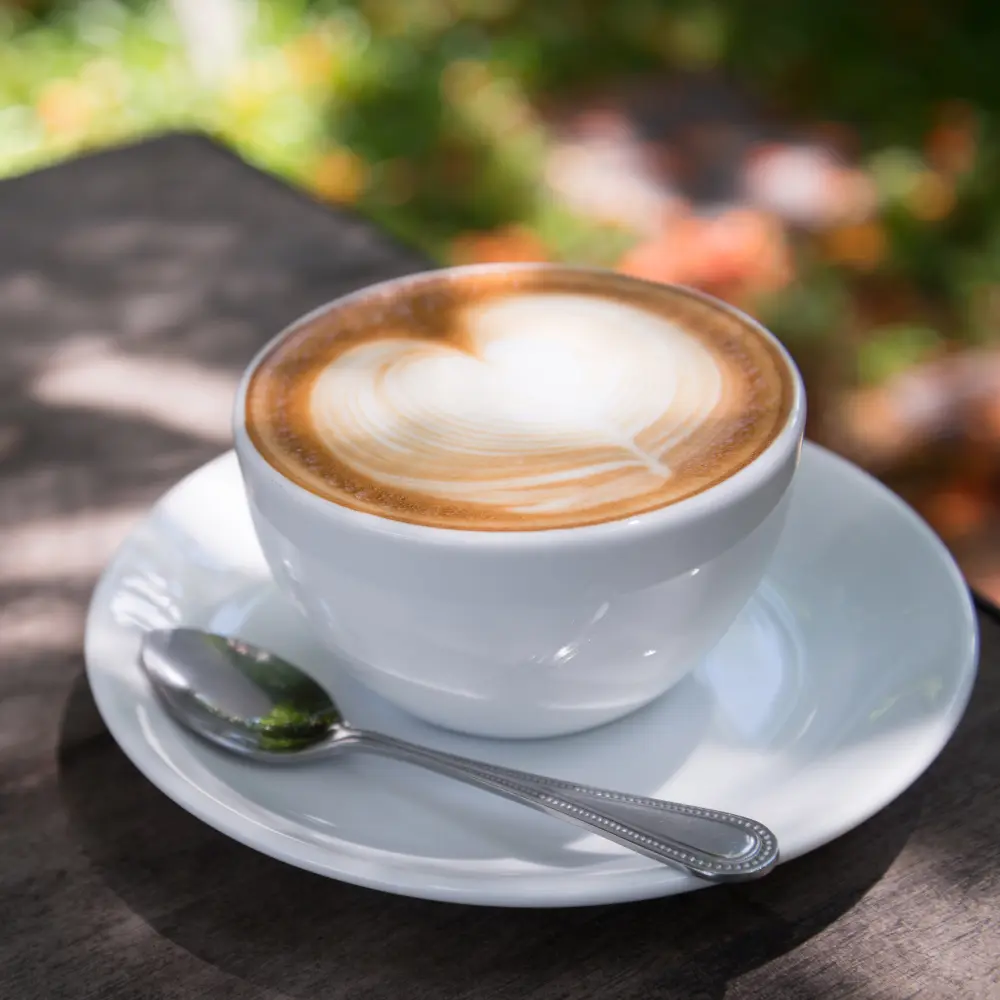
Conversely, the Breve, with its use of half-and-half, contains higher calories and fat content. This richness lends the Breve its unique, indulgent quality but also positions it as a more decadent choice. If you’re counting calories or managing your fat intake, you might want to consider the Breve as an occasional treat rather than a regular choice.
Overall, the decision between a Breve and a Latte comes down to personal preference – whether you lean towards the smooth, creamy charm of the Latte, or the rich, luxurious allure of the Breve.
Breve and Latte: Global Coffee Trends
The global coffee scene is a dynamic landscape where trends, preferences, and cultural practices continuously shape and redefine the coffee-drinking experience. In this context, the roles of Breve and Latte are as fascinating as they are varied. Let’s explore their popularity, cultural impact, and future trends in the ever-evolving world of coffee.
Popularity and Preference: Breve vs Latte
On the world stage, the Latte reigns supreme in terms of popularity. It’s a familiar presence in coffee shops, from large chains to independent cafes, owing to its approachable and adaptable nature. Its mild, creamy flavor makes it an ideal choice for those new to the coffee world or those who prefer a less intense coffee taste. The Latte’s adaptability to flavor additions also makes it a popular base for seasonal and specialty beverages, enhancing its global appeal.

The Breve, while less commonly found, has a dedicated following. It’s often seen as a more indulgent, rich coffee drink, favored by those seeking a denser, creamier experience. Its unique composition and flavor profile makes it a novelty in the vast coffee spectrum, garnering appreciation from coffee aficionados and adventurous coffee explorers alike.
The Cultural Impact of Breve and Latte
The cultural impact of the Latte is significant. Originating from Italy, it has spread globally, adapting to and influencing coffee cultures along the way. Its simplicity, versatility, and comforting nature have helped it weave into the fabric of everyday life in many societies. The Latte has also left a mark on popular culture, being featured in films, TV shows, and literature.
The Breve, with its distinctly American roots, represents the spirit of innovation and diversity in the coffee culture. It’s a testament to the exploration of taste and texture, showcasing how variations in traditional recipes can create new coffee experiences. While its cultural impact is less widespread than the Latte, the Breve’s unique place in the coffee landscape adds depth and variety to the global coffee narrative.
The Future of Coffee: Predictions and Trends
Looking ahead, the coffee industry is ripe with potential. As consumers become more knowledgeable and adventurous, there’s a growing trend toward experimentation and personalization. This trend favors drinks like the Latte, with its adaptability to various flavors and modifications. We can expect to see a continued rise in innovative Latte variations catering to different taste preferences and dietary requirements.
At the same time, the appreciation for unique and specialty coffee experiences is on the rise. This trend bodes well for the Breve, as it offers a differentiated, indulgent experience that stands out from more common coffee drinks. As more people seek to explore the breadth of coffee possibilities, the Breve’s rich and creamy nature could very well garner increased interest.
Sustainability is another key factor shaping the future of coffee. With a growing emphasis on ethical sourcing, fair trade, and environmentally friendly practices, the way both Lattes and Breves are produced and consumed could significantly change, contributing to a more sustainable and conscious coffee culture globally.
Conclusion
In the compelling narrative of coffee, the journey through the realms of Breve and Latte reveals a delightful interplay of flavors, textures, and experiences. The rich, creamy indulgence of a Breve and the comforting, soothing appeal of a Latte each offer unique perspectives on the delicate balance of coffee and milk. Our exploration of Breve vs. Latte uncovers not only their distinctive identities but also their shared role in shaping our global coffee culture.
Both beverages, with their unique attributes and characteristics, cater to a spectrum of preferences and tastes, thereby contributing to the inclusive, diverse, and dynamic landscape of coffee. As we navigate through the evolving coffee trends and predictions, the essence of the Breve and Latte stands firm – each a testament to the transformative power of coffee, each a celebration of the intricate dance between espresso and milk. As coffee lovers, the choice isn’t about picking a side in the Breve vs. Latte showdown, but rather about appreciating the diversity and richness these options bring to our coffee experiences.
Whether you prefer the indulgent creaminess of a Breve or the mild, velvety charm of a Latte, remember that each sip is a part of the global coffee story – a story that we all continue to write with our choices, our tastes, and our shared love for this enchanting brew.
FAQ
How is the taste of a Breve different from a Latte?
A Breve offers a creamier and richer flavor due to the use of half-and-half, while a Latte has a smoother, milder taste owing to a higher milk-to-espresso ratio.
What are the nutritional contents of Breve and Latte?
Lattes, predominantly milk-based, have lower calorie and fat content, whereas Breves, made with half-and-half, contain higher calories and fat.
How are Breve and Latte prepared differently?
Both start with espresso, but Lattes add steamed milk and a small amount of milk foam, while Breves mix in steamed half-and-half and a dollop of frothed half-and-half.
How has the popularity of Breve and Latte evolved over the years?
Lattes, with their mild and adaptable nature, have gained global popularity, while Breves, with their unique rich flavor, have garnered a dedicated following, particularly among coffee aficionados.




